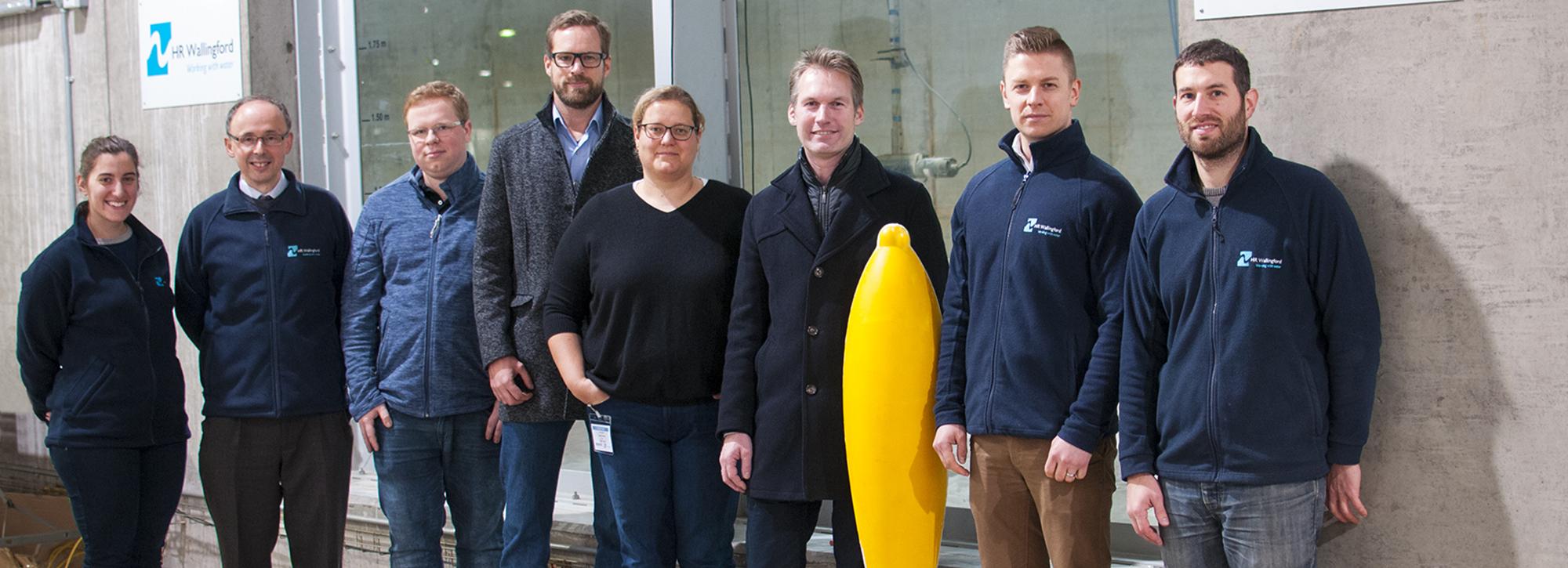
Predicting the movement of unexploded ordnance in the North Sea
If their locations are not precisely known, the presence of unexploded wartime ordnance in the sea can present an obvious hazard, such as during the construction of offshore grid connections, and, in particular, during the laying of cables to bring offshore wind energy to shore. HR Wallingford has been using its Fast Flow Facility to help TenneT and the University of Rostock to obtain data that will help to predict the movement of unexploded ordnance in the North Sea.
Potential sites for offshore cable routes and platform locations undergo a dedicated unexploded ordnance (UXO) survey, often followed by the identification and disposal of debris and, in a few cases, of UXO prior to installation. While these surveys allow UXO locations to be pinpointed on a particular date, the action of currents and waves may mean that the UXO migrate over time, making it necessary to repeat these UXO measures, for example in the case of a cable repair.
The University of Rostock in Germany has developed a model of unexploded ordnance movement for which it has already conducted small-scale modelling at the University. Now, with co-funding from TenneT, a leading European electricity transmission system operator (TSO) that supplies electricity to 41 million end-users in the Netherlands and Germany, this new project is seeking to generate large-scale data to better inform and validate this model.

HR Wallingford’s Fast Flow Facility provides a controlled environment in which to evaluate the effects of currents on full-sized UXO
Dr Peter Menzel, from the Sediment Transport Research Group at the University of Rostock, said: “We have provided a model of a 1:1 scale 250 lb World War II bomb and other typical unexploded ordnance at 1:2 scale. The ability of the Fast Flow Facility to replicate the scour, self-burial and mobilisation processes involved with UXO prediction at full-scale gives us great confidence in the results. We are investigating self-burial, so how deeply UXO bury themselves over time, as well as mobilisation current speeds, that is, how current speed affects the movement of UXO, as well as how rates of flow affect scour around UXO.”
Prof. Richard Whitehouse, Chief Technical Director, Sediment Dynamics at HR Wallingford, said: “In these experiments, we are using our expertise in the analysis and modelling of marine scour processes. Our Fast Flow Facility provides a controlled environment in which to evaluate the effects of currents on full-sized UXO, and so provide the University of Rostock with validated data across a range of flow conditions, burial depths and mobilisation speeds.
Dr Anja Drews, TenneT, said: “Being able to know and to quantify the circumstances under which unexploded ordnance move enables us to determine appropriate UXO measures in renewable marine energy projects . By funding this research, we are helping to ensure that knowledge in the industry about UXO movement is as accurate as possible, improving safety by quantifying, and thereby minimising, the risk to people and equipment.”
Top photo, from left: Esther Gomes, Prof Richard Whitehouse, Clemens Schütt (University of Rostock), Tjark Mehring (TenneT), Dr Anja Drews (TenneT), Dr Peter Menzel (University of Rostock), Dr David Todd and Joe Mitchell with the 1:1 scale model WWII bomb at HR Wallingford’s Fast Flow Facility
Want to know more?
